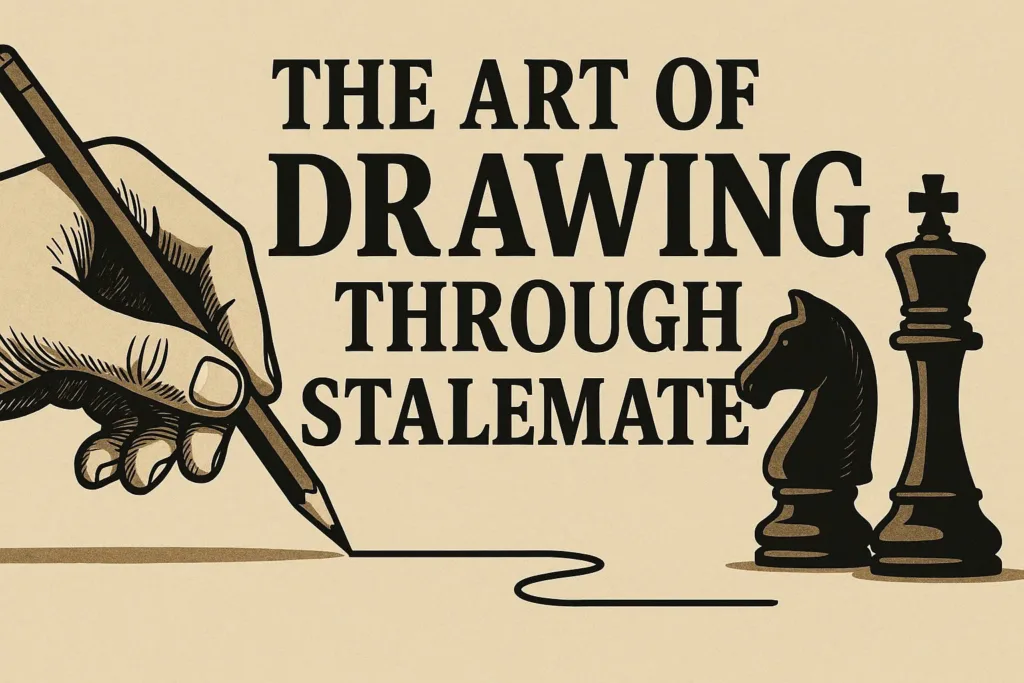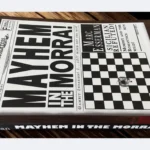Stalemate is often a miraculous escape for one side. Here are 10 instructive examples where the losing side saved the game through brilliant stalemate tactics.
No. 1 – White to play
This is a practical position that could easily arise in a real game. White must save the position by forcing perpetual checks.
Play continued:
- Qg8 Kf5
- Qh7 Kg5 (if not, the h-pawn falls)
- Qg8 (White keeps the option of checking from c4, which would be impossible after Qg7)
3… Kf4 - Qc4 Kg3
- Qd4! A spectacular drawing move.
Alternatively, 5. Qb3 also draws by perpetual check, while threatening to fork Black’s two pawns. For instance:
5. Qb3 Kf2
6. Qc2 Ke3
7. Qc3, and now:
- a) 7… Qd3 8. Qe1, then Qh4
- b) 7… Ke4 8. Qe1, then Qh4
- c) 7… Ke2 8. Qc4, then Qg4
Returning to the main line:
5… Qe6 (but if 5…Qd4? then White is stalemated!)
6. Qe3! Qxe3 stalemate.
No. 2 – Black to play and draw
Here, the main threat seems to be White’s passed a-pawn. But White overfocused on keeping the Black king out. Black drew by launching a surprising counterattack that threatened both king and pawn simultaneously:
1… Qg4!
2. fxg4 stalemate.
No. 3 – White to play
If White queens the pawn immediately, it’s a mistake:
- b8=Q? Qc1!
- Kh2 (if 2. Qc1, it’s stalemate)
2… Qf4! - Kg1 (if 3. Qxf4, again, stalemate)
3… Qc1 draw by perpetual check.
Instead, White wisely played the preparatory move:
- Bg6! disrupting the stalemate setup. Black resigned.
No. 4 – Marshall–McClure, New York 1923 – White to play
White delivered a clever surprise:
- Rh6! Rxh6
- h8=Q! Rxh8
- b5!
Whatever Black does now, the result is stalemate on the next move. A fortress is built from which neither player can escape.
No. 5 – Black to play
At first glance, it seems Black must search for perpetual check to hold the game. Instead, Black boldly steps into a stalemate cave, shuts the entrance behind, and traps both players inside:
1… Qg5!
2. Kxg5 Ka6!
3. Kf5 Ka5!
4. g4 a6!
5. g5 stalemate.
No. 6 – White to play
Sometimes, it’s smarter to go along with your opponent’s idea, especially when it means turning the plan against them. Here, Black threatens …Bh3 and Qg2#.
White replied:
- Rd1! and after
1… Bh3, came - Rd8+ Kxd8
Black likely expected resignation. But White dropped the thunderbolt:
3. Qd1!!
On the forced 3…Qxd1, the result is an incredible stalemate, despite so many pieces still on the board.
No.7 – White to play
White is down a knight for four pawns in an endgame where the pawns would usually have winning chances. But White saves the day, rather surprisingly, like this:
1. Nh6+! Kh6
(If 1… Kf8, then 2. Rg8+ wins the rook.
If 1… Kh8??, then 2. Nf7# is mate.)
Now the final blow:
2. Rg8!! Rxg8 stalemate.
No.8 – White to play
This one shows a common stalemate pattern in rook endgames, especially when a pawn has been pushed one step too far (like h3–h2). White draws by offering his rook, because if Black takes it, the game ends in stalemate.
1. Re4! Kd3
2. Re3+ Kd2
3. Rd3+!
(But not 3. Re2? because then 3… Ke2 wins and there’s no stalemate.)
Now:
3… Kc1
4. Rd1+ Kb2
5. Rb1+ Ka3
6. Rb3+ Ka4
7. Rb4+, and the chase continues.
There’s no progress, just a dance around the stalemate idea.
No.9 – Tal–M. Aaron
(From the 1960 Leipzig Olympiad Blitz Final)
At the end of the 1960 Olympiad in Leipzig, an International Blitz tournament was held (5 minutes per player per game). The great Mikhail Tal and Aaron were among the few who made it to the final top group, an all-play-all. In the game against Tal, Aaron reached this position, his pieces had total control, and defeat felt inevitable.
White threatens:
1. Rh7 Kg8
2. Rfg7+ Kf8
3. Rh8#
Aaron saw only one path: to get rid of his bishop, queen, and pawn, all while keeping his king stalemated. It probably looked like a desperate attempt to delay the loss. Aaron played:
1… Be4!
It looks like a feeble block against the Rh7 threat. White could win with Ra7, but Tal didn’t expect a stalemate trick from an unknown Indian.
He played:
2. Bxe4? Qb2!!
Now if:
3. Kxb2, then 3… a3+ and whether White takes the pawn or not, it’s stalemate.
Tal froze, staring at the board. Aaron looked up at the crowd, proud he had drawn with the world champion. But… why wasn’t he moving? Why didn’t he at least offer a draw?
Then Aaron noticed. He hadn’t stopped the clock! It was still ticking.
Panicking, Aaron hit it just in time. Tal looked up and said:
“Remis?” (the German word for draw).
Draw agreed.
No.10 – White to play
When a king sits in a corner—like h1, a1, a8, or h8—the queen can often be sacrificed on specific squares (f2, c2, c7, f7, g3, b3, b6, g6) to force a draw. Here’s a classic:
White to move. No need for messy perpetual checks, he goes straight for the draw:
1. Qf2+ Qxf2 stalemate.
To sum up, stalemate isn’t just a defensive resource. It’s often a final act of creativity, turning hopelessness into harmony. Across these ten cases, we’ve seen players spot brilliance not in winning, but in not losing.
Whether it’s a quiet queen retreat, a bold sacrifice, or a disguised perpetual, these moments remind us that chess isn’t always about domination. Sometimes, it’s about survival with style. And in those rare, poetic positions where every square is covered and yet no legal move exists, we witness the purest form of balance: the art of drawing through stalemate.
I’m the senior editor of Attacking Chess, a keen chess player, rated above 2300 in chess.com. You can challenge me or asking questions at Chess.com.







2 thoughts on “The Art of Drawing Through Stalemate”
Comments are closed.